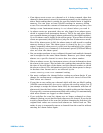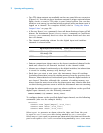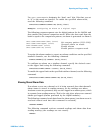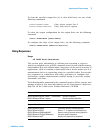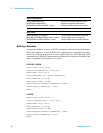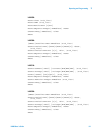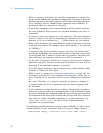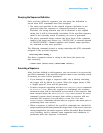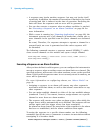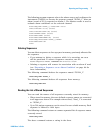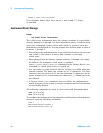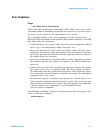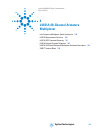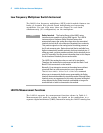Operating and Programming 3
L4400 User’s Guide 93
Querying the Sequence Definition
Once you have defined a sequence, you can query the definition to
review what SCPI commands have been assigned.
• The exact text specified in the original sequence definition is not
preserved when the sequence is compressed/stored in memory.
Therefore, the string returned may not be identical to the original
string, but it will be functionally equivalent. If the specified sequence
name is not currently stored in memory, an error is generated.
• The query command always returns the short form of the command
header in all upper-case letters (e.g., “ROUT:CLOS” is returned instead
of “ROUTE:CLOSE”). Channel numbers and channel range specifiers
are returned as they were specified.
The following command returns a string containing the SCPI commands
assigned to the specified sequence.
ROUT:SEQ:DEF? MYSEQ_1
The above command returns a string in the form (the quotes are
also returned):
":ROUT:CLOS (@1001:1009);:ROUT:OPEN (@1001)"
Executing a Sequence
After you have defined a valid sequence, you can execute it to process the
specified commands. If the specified sequence name is not currently stored
in memory, an error will be generated.
• If you attempt to trigger a sequence while one is already executing,
the trigger will be placed in a queue. When the trigger queue is full,
a “trigger ignored” error will be generated.
• To abort a sequence execution, use the ROUTe:SEQuence:ABORt command
or a Device Clear. When the sequence is terminated, the resultant
instrument state will be determined by how much of the sequence had
been executed when the
ABORt/Device Clear was received. An ABORt
command (system abort) executed from within a sequence will not
terminate the sequence, but will abort a scan. The *RST and
SYSTem:PRESet commands will also abort a sequence execution prior to
performing their own actions.
• When a sequence is defined, the specified commands are checked for
proper syntax and absolute parameter range limits. If an error is detected
during compilation, the entire sequence will be discarded. More extensive
error checking, such as channel range expansion and validation, is
performed when the sequence is executed.



